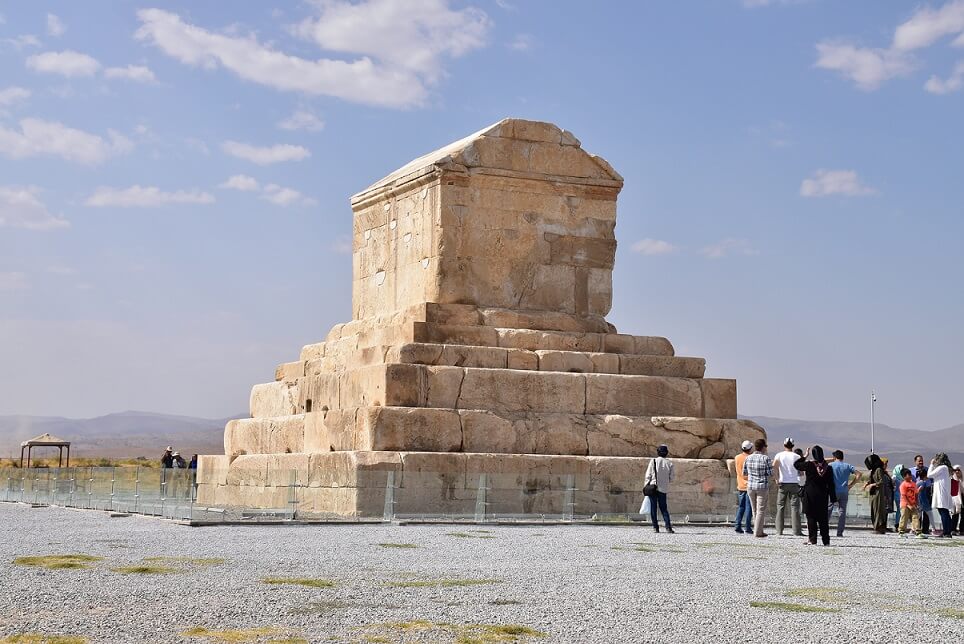Pasargadae - UNESCO Site near Shiraz
The Pasargadae is one of the main Shiraz attractions. The ancient historical place. Here, you can find all things to know about Pasrgadae, like address, photos, tourist information, nearby main attractions, and Iran tours that include this attraction.

Pasargadae + address & photo
- Theme: Historical and Culture
- UNESCO World Heritage Site
- Address: about 110 km north of Shiraz on the highway to Isfahan and Tehran
- Opening Hours: 09:00-19:00
- Recommended Time to Spend: 2 hr
Tourist information about Pasargadae
The Pasargadae Complex is the fifth Iranian site to be added to the UNESCO World Heritage List.
Pasargad is known as the tomb of Cyrus the Great, one of the Achaemenid kings. You may see this king in the Charter of Human Rights. The Cyrus Cylinder is an inscription written on a cylindrical clay tablet and is called “the first charter of human rights in the world.” This tomb, with its stepped architecture, is very similar to a “ziggurat.”
Pasargadae was the first capital of the Persian Achaemenian dynasty. It was located northeast of Persepolis on a plain in southwestern Iran. Tradition says that Cyrus II chose the site because it was close to where he won his battle against Astyages the Mede. The city’s name may have come from the name of the largest Persian tribe, the Pasargadae.
The Architecture of Pasargadae
This masterpiece is the only building that shows how good the Achaemenids were at building things. The simple grandeur of Pasargadae’s architecture offers a sense of balance and beauty that was never seen before or after the time of the Achaemenians.
The principal buildings stand in magnificent isolation, often with a standard orientation but scattered over an extensive area. Even though a single wall did not surround the whole site, the northern approaches were controlled by a strong citadel, and the most important monuments were protected by their borders.
The main thing about the citadel is a big stone platform that sticks out from a low cone-shaped hill. Two unfinished stone staircases and a tall, rough-hewn facade were probably meant to be part of a high palace enclosure. South of the citadel, on more or less flat ground, was a large walled park with beautiful gardens that were watered and surrounded by royal buildings.
In the northwest corner of the settlement is a walled area called the “sacred precinct,” with a sizeable terraced mound that looks down on two fire altars standing alone. Even though the whole enclosure was used for religious ceremonies, there is no proof that it held the famous shrine of the goddess Anahiti, which was said to be where certain rituals were held at the start of each new monarch’s reign.

You can add this attraction to your itinerary. Please get in touch with tour operators.
- info@letsseepersia.com
- Nearby Location
- Pasargadae to Persepolis. 1hr 4 min by car.
- Pasargadae to Naqsh-e Rostam. 55 min by car.
- Pasargadae to Quran Gate. 1hr 36 min by car.
- Pasargadae to Tomb of Hafez. 1hr 40 min by car.
List of Iran tours includes Pasargadae
- Shiraz City Tour
- 11-Days Iran Highlights Tour
- 9 Days Iran Classic Tour
- Monthly Iran Group Tour



